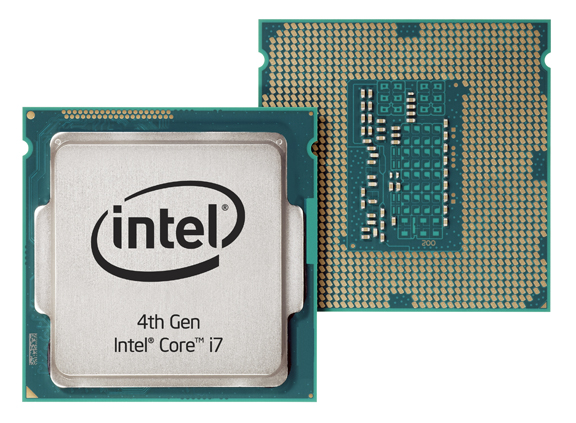Latest News
June 4, 2013
A couple of hours after noon on Tuesday June 4 in Asia, or an hour before midnight Monday in the Pacific Time zone, Intel is debuting its fourth-generation Core architecture, codenamed Haswell. The big splash is set to occur at Computex in Taipei, Taiwan, at Taipei World Trade Center Nangang Exhibition Hall. But many critical details about the Haswell—its power efficiency and mobile-friendliness in particular—have already been made public long before by Intel executives themselves. Here are a few revelations gleaned from conference previews in the last two years:
Haswell was designed to enable a 30% in connected standby power over the currently shipping notebooks using our 2nd generation Core microprocessors … We’ve targeted Haswell’s design not just for lower power but for architecting a system-level power management framework that … has the opportunity to reduce the platform power by a factor of more than 20 over our current design. We’ll do and deliver all of this without compromising any of the performance you’ve come to expect from today’s mainstream notebooks. —Intel CEO and president Paul Otellini, Intel Developer Forum 2011, San Francisco, California
The great thing about this one [Haswell]—It was designed with mobility in mind. As the world moves to more and more mobility, I’ve been challenging the team to go figure out [how] to fit Haswell into something like this [an early prototype ultrabook].”—Dadi Perlmutter, executive VP and general manager of Intel, Intel Developer Forum 2012, San Francisco, California
Haswell is the first product to develop with the Ultrabook in mind. The other ones were things we had to retrofit.—Kirk Skaugen, Intel’s corporate VP and general manager, PC Client Group, CES 2013, Las Vegas, Nevada
On June 4, Intel is literally naming names. The Haswell product lineup includes:
- for desktop space, Intel Core i7-4770S, 17-4770TE, i5-4570S, and i4570TE;
- for mobile space, Intel Core i7-4700EQ;
- for workstations, Intel Xeon E3-1275 v3, E3-1225 v3, and E3-1268L v3.
According to Intel, “Without the need for a discrete graphics card, the built-in graphics features deliver smoother visual quality, improved ability to decode and transcode simultaneous video streams. Additionally, the new platform can also support up to three independent displays, enabling one system to drive multiple screens.”
By providing CPU-integrated graphics that can adequately tackle routine CAD visualization, Intel is pushing back against GPU maker NVIDIA’s encroachment. For performance-hungry users, NVIDIA would recommend augmenting the CPU’s capacity with additional GPUs. Intel’s Shimanek advocates an alternate strategy. “Save a little on graphics and invest in Solid State drives,” he says. “When you do that you can actually impact a broader array of applications that users e[ploy in the day in the life of an engineer.” (For more, read “Changes Brewing in the Power Game,” June 2013.)
Preparing for Multitouch and Mobile: Haswell anticipates the proliferation of multitouch computing, driven largely by future PCs running on touch-enabled Windows 8 OS. The chip maker also appears to be banking on the ultrabook form factor—a detachable tablet with a keyboard—as the future of computing. It’s a gamble that’s in alignment with the most recent market data from IDC, which shows “Some 229.3 million tablets are expected to ship this year for a 58.7% growth rate, compared to 2012. By contrast, PC shipments are down for the second year in a row, dropping 7.8% in 2013, the company announced.”
IDC observes, “The key takeaways: tablets are becoming smaller and cheaper, while at the same time being increasingly able to accomplish tasks once done by PCs ... Slumping shipments of laptops and PCs can no longer be blamed solely on a depressed worldwide economy. Instead, a paradigm shift is underway—one that doesn’t include PCs and laptops for many consumers.”
Better Parallel Processing: Haswell marks Intel’s first use of transactional memory in hardware, a method of “incorporating transactions into the programming model used to write parallel programs” (”Transactional Memory: Synthesis Lectures on Computer Architecture,” James R. Larus, Microsoft; Ravi Rajwar, Intel, Morgan & Claypool Publishers). The method is expected to yield performance gains in highly parallel applications such as rendering and simulation.
Traditionally, professional design, simulation, and visualization software users rely on workstations, because the computing power available in tablets and mobile devices can only meet the software’s demands partially. But the introduction of Haswell, Intel workstation segment’s point man Shimanek predicts, will “allow Intel OEMs to explore other form factors.” That may include, for instance, an ultrabook with sufficient processing and graphics capacity to tackle a professional CAD or simulation program.
Subscribe to our FREE magazine, FREE email newsletters or both!
Latest News
About the Author
Kenneth Wong is Digital Engineering’s resident blogger and senior editor. Email him at [email protected] or share your thoughts on this article at digitaleng.news/facebook.
Follow DE






